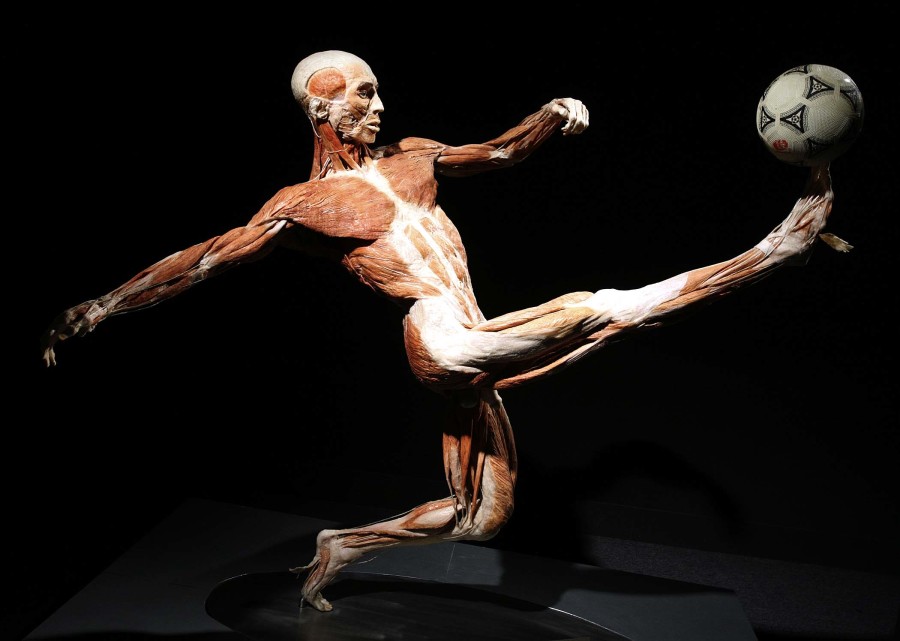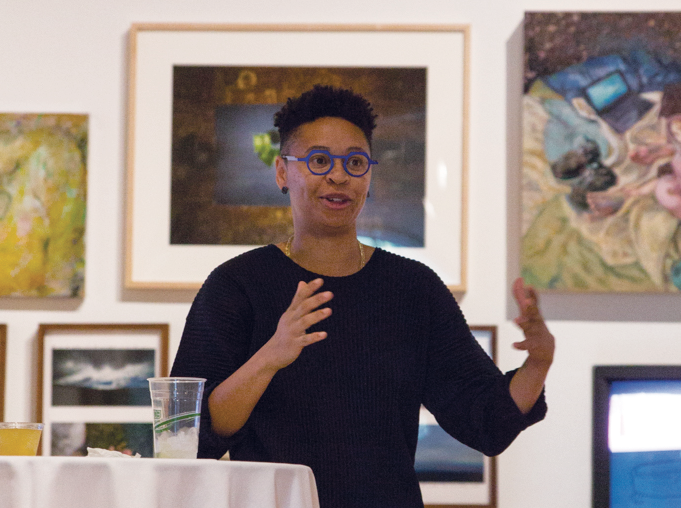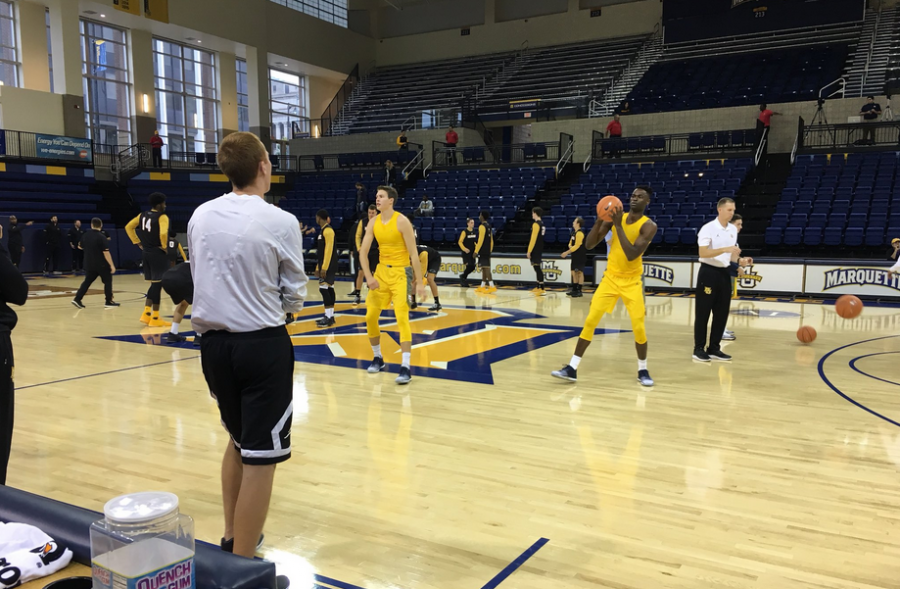What do a hipster, an athlete, a nerd, a socialite and a professor have in common? They are all human.
The new special exhibit at the Milwaukee Public Museum, “Body Worlds: The Cycle of Life,” guides guests through the human life cycle in the most visual way possible. The exhibit features real humans stripped down to their innermost pieces to show just what is going on as we age. It even highlights how our choices and lifestyle can affect us throughout the aging process.
The exhibit features real human bodies, referred to as plastinates, that have undergone the process of plastination. Plastination involves injecting human tissue with silicone rubber and applying a curing agent in the form of gas to stop the natural process of decomposition. The exhibit was created by Dr. Gunther von Hagens in 1977.
Dr. Angelina Whalley, licensed physician, creative and conceptual designer of “Body Worlds,” and director of the Institute for Plastination in Heidelberg, Germany, says, “My goal was to present aging as a natural occurrence that we ought to embrace because we can shape it to our advantage.”
Ellen Censky, senior vice president of the Milwaukee Public Museum, believes this exhibit particularly appeals to college students. “There are so many full-body plastinates in here that are in poses doing things that (college students) do,” she explains.
One of these plastinates is a skateboarder performing a hand plant on a ramp. Interested yet? These posed plastinates reveal what muscles the body uses in these various actions humans can perform.
The cycle of life is relevant to each and every one of us. No matter where you are from, you came from a mom. Thus, the cycle of pregnancy is naturally the first stage that the exhibit walks you through. There is information on that awful teenage experience everyone at Marquette has gone through: puberty. After this point, as college students, you have an advantage over other patrons: you can learn what is coming and prepare for it. From the twenties you are experiencing now through ‘sexy sixties,’ the exhibit covers it all and tells you how to prepare yourself.
You will walk through every piece of your body from your brain, to your nerves, to your bones, to your organs, to everywhere else. There is information all throughout the exhibit on anything you may have questions on. For instance, if you ever wondered what that surgery on your arm looked like inside, you can see it. If you don’t understand how cataracts affects your grandparent, you can come and see for yourself what the world may look like for them. If you’d like a deeper understanding on cancer, you can see real tumors in various organs. This exhibit is incredibly comprehensive, not only of the aging process, but of our health and lifestyle processes, as well.
In addition to plastinates, the exhibit features healthy human organs and those that have seen better days. The stereotypical anti-smoking display of blackened human lungs is present, along with more information to potentially dissuade those inflicted by the habit.
This part of the exhibit is not meant to necessarily to scare guests, but to prepare them for what can come of the habit. Dr. Whalley cites survey research on “Body Worlds” patrons, “Half a year after visiting Body Worlds, around 9 percent claimed they stopped smoking afterwards, or 33 percent said they would care for healthier food ever since, and around 25 percent said they would exercise more. To me, as a physician, this is a true success. I had always hoped in my professional career to treat one patient at a time, but “Body Worlds” helps me to do preventative medicine.”
You can come up with all the excuses you want, but the facts speak for themselves. For example, you probably didn’t know that scientists believe our life expectancy is only determined 30 percent by our genetics. A family history is no excuse for poor health decisions.
Why have almost 40 million people worldwide come to receive an up close and personal anatomy lesson from this exhibit? Dr. Whalley does not think it is a newfound global love for the subject. Whalley says, “I suggest that you find out by observing the visitors inside the exhibit, yourself. You will find people very deep in thought, in thought about themselves. They are standing in front of these corpses, but in the end they discover themselves. For the very first time, they can see firsthand what they are made of.”
No matter who you are this exhibit is about you. No matter the color of your skin, it is going to stop producing collagen pretty soon. No matter how athletic you are, your peak is now. No matter what health decisions you make, they will have a lasting impact on your life.
There is nothing about this exhibit to be afraid of. Go and see for yourself what your body has gone through, is going through and will go through. Dr. Whalley says, “To me, the human body is always a wonder.”
Experience this wonder for yourself. It is not weird, scary, disturbing, or disgusting in any way. It is not just for science majors. It is for all members of the human race and it is a wonderful experience.
The Milwaukee Public Museum offers free admission to Milwaukee County residents (including Marquette students) the first Thursday of every month; however, there is a separate $15 student rate fee to see “Body Worlds: The Cycle of Life.” Should you venture to this exhibit, please keep in mind that every single piece of this exhibit once belonged to a person like you. Treat the exhibit with respect.





John mutdoch • Jun 24, 2016 at 7:25 am
When body worlds first started I went along to London to see the exhibition it was the most amazing thing I have ever seen I signed up to leave my body when I die but found out although you were making millions of pounds out of the tours you expected people to pay to have their body’s shipped to your labs this put me off as I’m retired andcould not afford to do this I used to get books from you showing the new figures this had now stopped when dr VonHagen first started I wrote to him to support his exhibits and still feel it’s for the good for people to see these sort of things yours John m